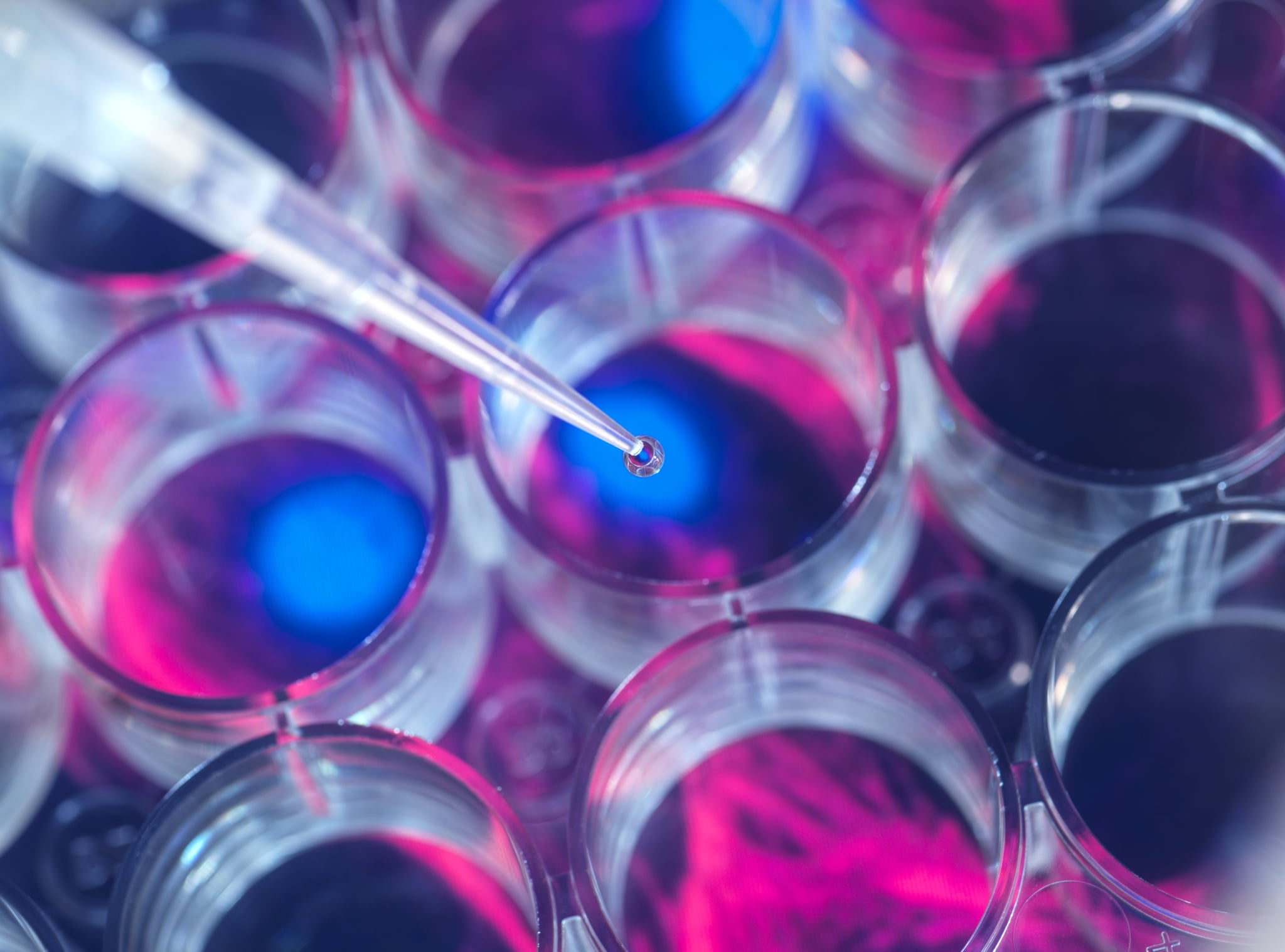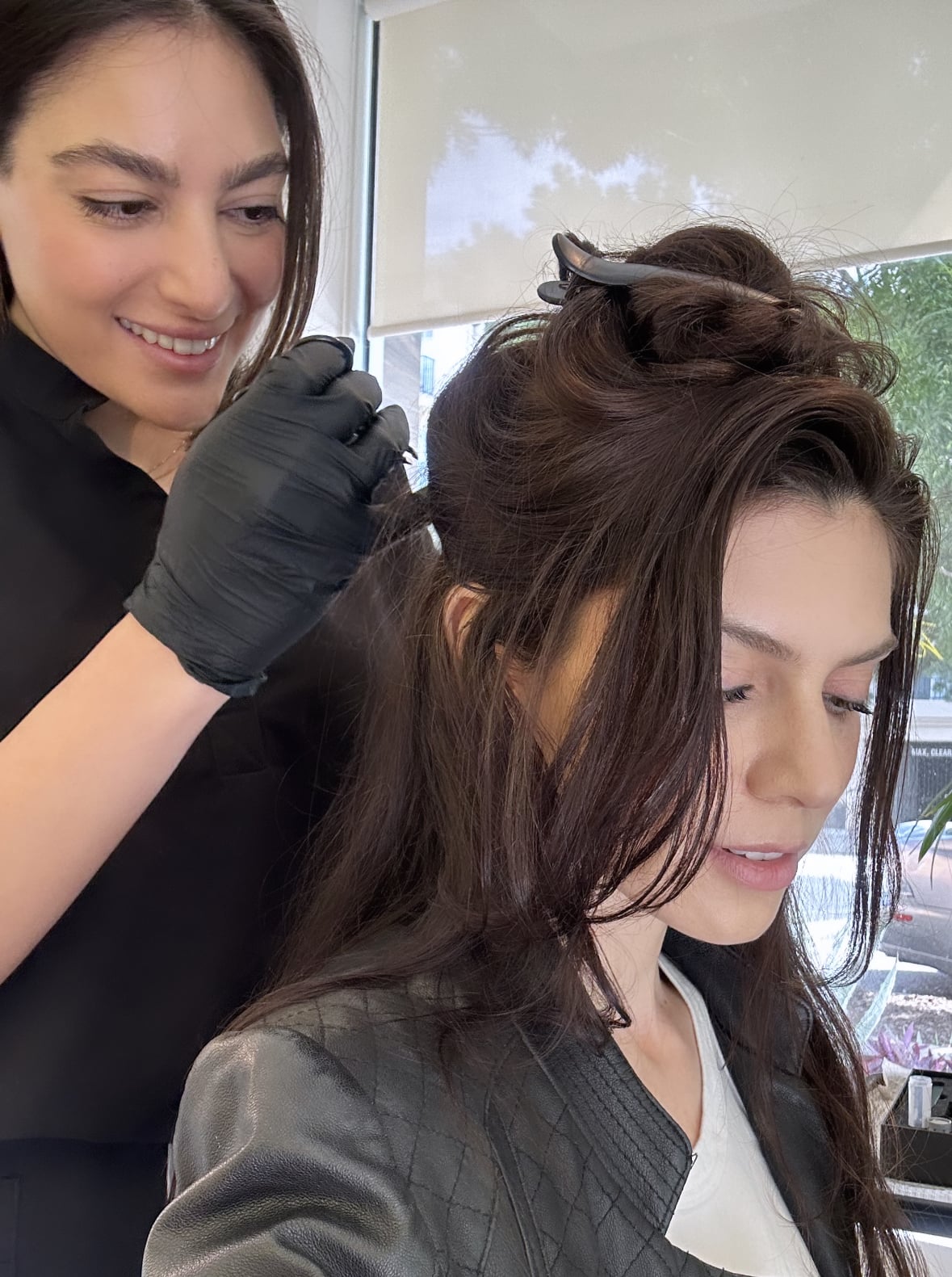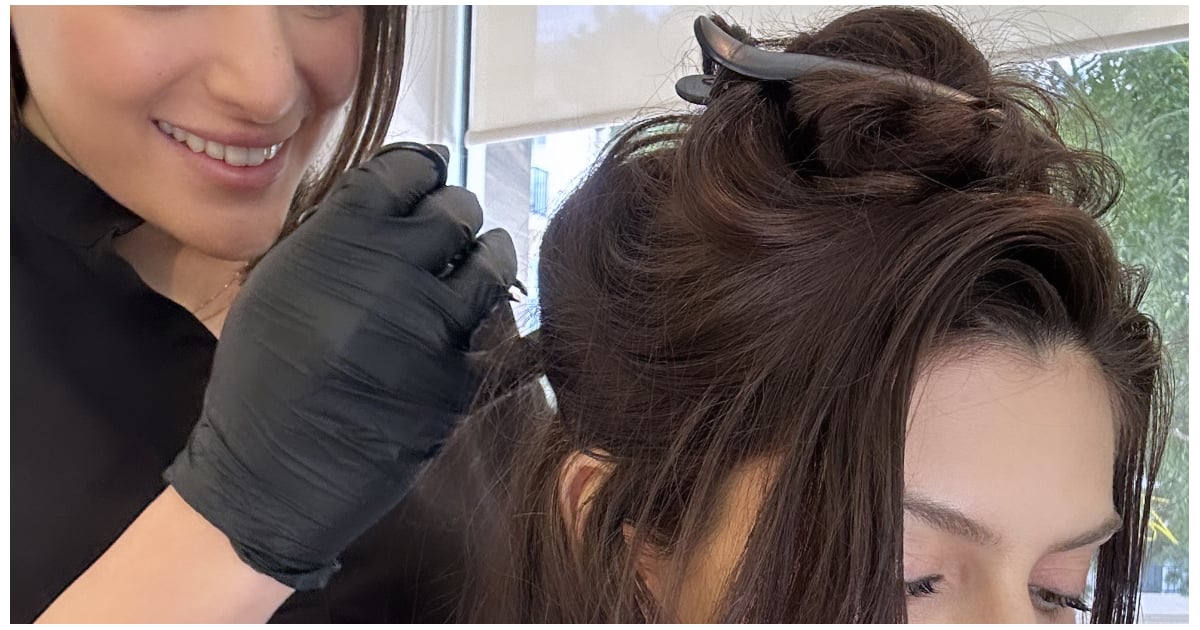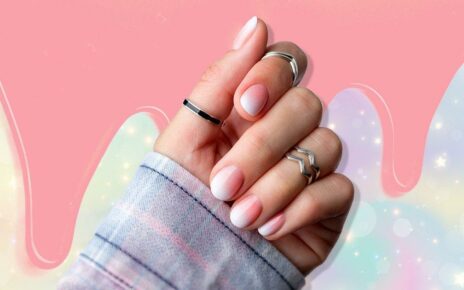
Image Source: Getty / Andrew Brookes
While my friends are in the process of freezing their eggs to have kids down the line, I decided to freeze my stem cells in the name of better skin and hair in the future. Stem cell therapies have been used for years in medicine, with more recent applications in a branch of anti-aging called regenerative aesthetics. Historically stem cells have been challenging and invasive to extract from adults. Whereas umbilical cord blood is a popular source for newborns, doctors opt for more invasive sources like bone marrow or human fat once that ship has sailed.
More recently, stem cell-derived therapies — such as exosome serums, which you may have heard of — are making their way into aesthetic doctor’s offices for use after microneedling or laser treatments. Most of the options use a donor source and were synthetically recreated in a lab. But if you want to use your own stem cells, you can now acquire them non-invasively and cryogenically freeze in order to have access to your younger cells for your own regenerative serums for skin and hair regrowth, filler-alternative gels, and even medical applications down the line.
That’s why I jumped at the opportunity when Acorn Biolabs partnered with the Santa Monica, CA, MedSpa, Dripology, to harvest and store my stem cells non-invasively from the hair follicle. After plucking hairs from your head, they are taken to a lab to test their viability. Then they cryogenically freeze and bank your sample for $90/year. This preserves them at the age they were harvested, and then you have the option of ordering customized, regenerative serums and filler-alternatives for your future aesthetic treatments with your doctor or aesthetic nurse practitioner. (When medical therapies become more readily available, they will be available for that, too, and they have partnered with a number of research labs devoted to this.)
From an anti-aging standpoint, the incentive is clear. Preclinical data from Acorn estimates that these personal stem cell-derived serums are “many folds higher in concentrations of exosome, growth factor, and matrix molecules” than platelet-rich plasma (PRP — the “star” ingredient of the “vampire facial”). By microneedling one of these serums instead of PRP, you will essentially be getting a vampire facial on steroids. Plus, you might not realize this, but each time you get PRP or platelet-rich fibrin (PRF), it is decreasing in potency chronologically due to the aging processing. So, this is a way of harnessing your innate regenerative potential here and now. “We are really at the start of a new era in regenerative medicine,” says Drew Taylor, MSc, PhD, and Acorn Biolabs’ co-founder and CEO. “By leveraging our own younger cells, we’re going to unlock powerful aesthetic treatments and new ways to treat injury and disease.”
Below, experts break down this cutting-edge offering for adults stem cell preservation. Then, learn more about my firsthand experience of having my stem cells retrieved and frozen.
First, Why Stem Cells?
To better understand the process, board-certified dermatologist Julie Russak, MD, founder of New York-based Russak Dermatology Clinic, explains that regenerative medicine and aesthetics focus on “harnessing the body’s innate capacity to repair, renew, and replace aging, damaged, or diseased tissues and organs.” The field, which she is passionate about at her practice, often creates custom therapies using a patient’s own cells or tissues, making use of biological matter such as “exosomes, growth factors, and cytokines.”
Board-certified plastic surgeon Steven Cohen, founder of Faces+ and co-founder of the London Regenerative Institute, refers to these ingredients as “bio-intelligent agents.” He uses them in every facelift via facial fat grafting (human fat is a potent source of them), noting that they “make skin cells more youthful, [address] losses in facial volume, and [regenerate and maintain] soft tissue and bone regeneration for longer periods of time.” While knowledge of these properties is not new, the option to have access to our own regenerative potential from a hair follicle — as opposed to human fat — is a much less daunting process.
As for what exactly these bio-intelligent ingredients do, Jayant Lokhande, chief scientific officer of DMK (a brand that created a treatment called StemZyme to stimulate the stem cells in the skin), says that exosomes are what carry the biological molecules responsible for inter-cell communication, cytokines are the messengers, and growth factors activate cell growth and differentiation. The results in the skin are “pigmentation correction, improved skin thickness, increased hydration, collagen density, and elasticity.”
The kicker? These regenerative components come from the stem cell. “If exosomes are the roses that you give a loved one, the stem cell is the rose bush that continues to create them,” Dr. Cohen says. But dermatologic nurse practitioner Natalie Aguilar, co-founder of N4 Skincare, points out that our stem cells “decrease in quality and quantity as you age.” According to Dr. Lokhande, their decline over time is due to something called senescence — a part of the aging process in which cells deactivate and accelerate aging — as well as epigenetic factors such as “inflammation, stress, radiation, smoking, alcohol, infections, [and] pollution.”
Speaking personally, I do believe that these ingredients work and maximize the efficacy of your aesthetic treatments. I have experienced incredible expedited healing that takes place via exosomes following invasive microneedling or laser treatments. I have also been impressed with the long-term results of injecting PRP into areas of my face with volume loss and poor skin quality. The option to have my own regenerative serum on-hand for future aesthetic appointments, preserved at my biological age’s current potency, was an exciting prospect for me.
Extracting Stem Cells from Hair Follicles
Since younger equates to better as far as stem cells are concerned, some parents have their infants’ umbilical stem cells banked at birth for the potential medical benefits down the line. Yet Aguilar explains that even my 30-something year old stem cells, protected from the aging process, will be appealing to my older self. With far-reaching aesthetic and medical potential to gain, having a few hair follicles plucked seems like a small price to pay.
On that note, I headed to Dripology to have my stem cells retrieved. During the appointment, I sat in a chair as aesthetic nurse Rana Jaffari began sifting through my hair in search of 50 follicles to pluck. Each time she plucked a hair, she had to check the end — when she could see the white bulb at the base, that’s when she knew the follicle was intact. Then she snipped it off using a pair of scissors, into a vial containing a preservative gel, before proceeding to the next strand.
I honestly never knew that my strands of hair were the sources of such precious biological material. Taylor explains that the human hair follicle contains three different sources of stem cells that used in regenerative medicine: mesenchymal stem cells (MSCs), keratinocytes, and fibroblasts. These undifferentiated (meaning not yet biologically “assigned” to a specific biological purpose or body part) cells are then taken to the lab where they are tested for viability, cryogenically frozen, expanded, differentiated into different cell types, and used to create more exosomes and growth factors. Because they are specific to you, there is supreme compatibility and no risk of immune rejection.

Having my hairs plucked was not uncomfortable, and considering the hundred thousand plus hairs on a human head, the loss was negligible. If you ever went to a school where there was a lice outbreak, and parent volunteers had to sift through students’ hair to try to detect any infestations, this was a throwback to that. The hardest part was having the patience to sit there while Jaffari looked for the next strand to pluck. After asking how many more there were to go, I eventually gave up and we talked about other things.
After she was done collecting my follicles, a courier collected them and took them to the lab. Once there, scientists will test their viability and cryogenically freeze them. Once stored, you pay an annual premium for their preservation and security. You will then have a lifetime supply of microneedling serums, gel filler alternatives, and potential medical applications, which can be purchased for additional fees comparable to the in-office alternatives.
The Limitations of This Type of Stem Cell Therapy
Keep in mind that regenerative medicine is still an emerging field. It was not that long ago that this type of conversation would have sounded controversial. While adult stem cell banking sounds extremely promising, there are still some unknowns when it comes to the quality of banked and replicated ingredients. “Banking makes a lot of sense theoretically, but the clinical effectiveness of treatments after banking is limited to a few studies,” Dr. Cohen says. He also reiterates that age matters when it comes to these ingredients, and there is limited data to prove that treatments using banked stem cells are as effective as using an age zero donor source (i.e., umbilical).
So, there is potentially a trade-off in terms of potency and invasiveness. It is possible that the impact of freezing, banking, and “expanding” process (the term for using the stem cells to create the regenerative materials) lessens their potency, in which case you could just purchase a vial of exosomes for post-treatment application at your doctor’s office. While Dr. Cohen considers the hair follicle a “reasonably good” source of stem cells, he prefers human fat as a source (as is seen during facial fat transfers, facelifts, and more), and his gold standard source of stem cells would be allogeneic mesenchymal cord blood. (He does not see a large risk of rejection with these types of ingredients.)
There is also the important question of viability. When my samples made it to the lab, some of my follicles were too thin, and it was determined that I needed to return to have another 50 strands plucked before my sample could be preserved and the banking and expansion process could commence. That being said, the option of sourcing your own stem cells via your hair follicle is an incredible opportunity for the beauty nerd. In a way, it is like investing in the stock market — except you are “betting” on the continued expansion of regenerative medicine.
Not only is the field fascinating, but the doctors I know are incredibly passionate about its potential. By preserving your adult stem cells now, you will likely have much more than a supply of ultra-potent anti-aging materials. Far beyond aesthetics, you will be keeping the door open to opt-in on medical advancements down the line for treating disease. And if I ever have a child, I will definitely have a team collect and bank the stem cells from his or her umbilical cord blood as a form of futuristic health insurance.
Source: Read Full Article

